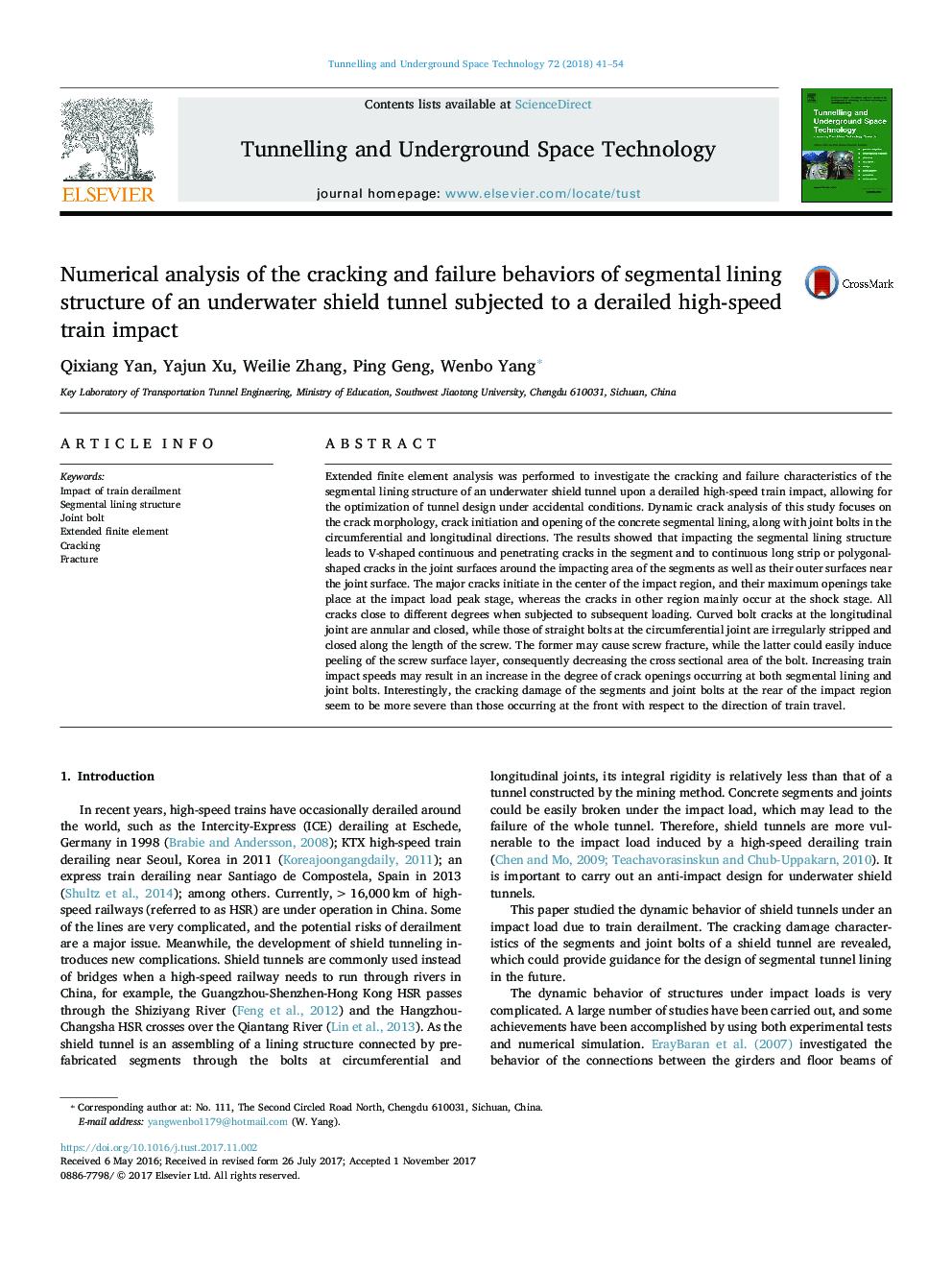| Article ID | Journal | Published Year | Pages | File Type |
|---|---|---|---|---|
| 6782717 | Tunnelling and Underground Space Technology | 2018 | 14 Pages |
Abstract
Extended finite element analysis was performed to investigate the cracking and failure characteristics of the segmental lining structure of an underwater shield tunnel upon a derailed high-speed train impact, allowing for the optimization of tunnel design under accidental conditions. Dynamic crack analysis of this study focuses on the crack morphology, crack initiation and opening of the concrete segmental lining, along with joint bolts in the circumferential and longitudinal directions. The results showed that impacting the segmental lining structure leads to V-shaped continuous and penetrating cracks in the segment and to continuous long strip or polygonal-shaped cracks in the joint surfaces around the impacting area of the segments as well as their outer surfaces near the joint surface. The major cracks initiate in the center of the impact region, and their maximum openings take place at the impact load peak stage, whereas the cracks in other region mainly occur at the shock stage. All cracks close to different degrees when subjected to subsequent loading. Curved bolt cracks at the longitudinal joint are annular and closed, while those of straight bolts at the circumferential joint are irregularly stripped and closed along the length of the screw. The former may cause screw fracture, while the latter could easily induce peeling of the screw surface layer, consequently decreasing the cross sectional area of the bolt. Increasing train impact speeds may result in an increase in the degree of crack openings occurring at both segmental lining and joint bolts. Interestingly, the cracking damage of the segments and joint bolts at the rear of the impact region seem to be more severe than those occurring at the front with respect to the direction of train travel.
Related Topics
Physical Sciences and Engineering
Earth and Planetary Sciences
Geotechnical Engineering and Engineering Geology
Authors
Qixiang Yan, Yajun Xu, Weilie Zhang, Ping Geng, Wenbo Yang,
